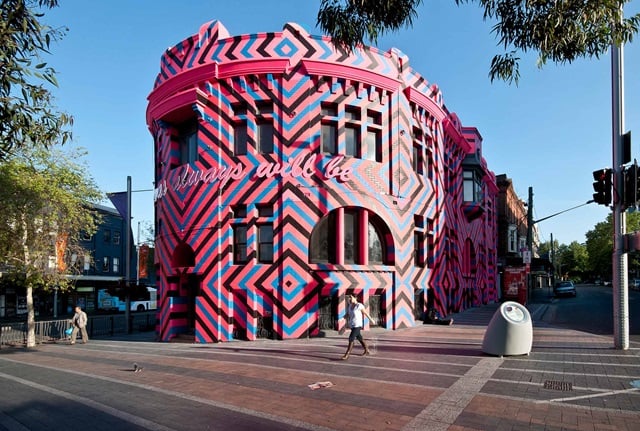


Sandstone relics from Sydney’s early buildings create an archaeology of the city sinking into the earth at the site of a former quarry.
Curator: Sally Couacaud
Artwork description
Commissioned as part of the Sydney Sculpture Walk for the Sydney 2000 Olympics, Memory is Creation Without End consists of a massive spiral of sandstone blocks embedded into the earth of the Tarpeian Way, adjacent to Macquarie Street.
Kimio Tsuchiya has incorporated these relics from demolished buildings and structures such as the Pyrmont Bridge, carved and embellished by stonemasons but now darkened with age and scarred from use. Each piece of stone testifies to its lost function and to the loss of those buildings and structures from the collective memory.
Once quarried for the city’s early sandstone buildings and to provide fill for the creation of Circular Quay, the Tarpeian Way is now but a thin veneer of earth covering the Sydney Harbour Tunnel. Seemingly emerging from yet at the same time sinking back into the ground, the artwork resembles an archaeology of the city.
Memory is Creation Without End symbolises the circular connection of past, present and future. In salvaging and reconfiguring the stones into this spiral unification of sculpture and landscape, the artist endows them with new life, meaning and memory.
Artist
Kimio Tsuchiya was born in 1955 in Fukui, Japan, Tsuchiya studied architecture at the Nihon University and completed a Master of Arts in Sculpture from the Chelsea School of Art, London in 1989.
Tsuchiya is one of Japan’s most eminent and active artists. He has built an international reputation for a body of work employing a diversity of forms, from used building material and consumer goods to natural objects like driftwood and stones. The use of these salvaged materials invests his work with feelings of loss, remembrance and rebirth.







